

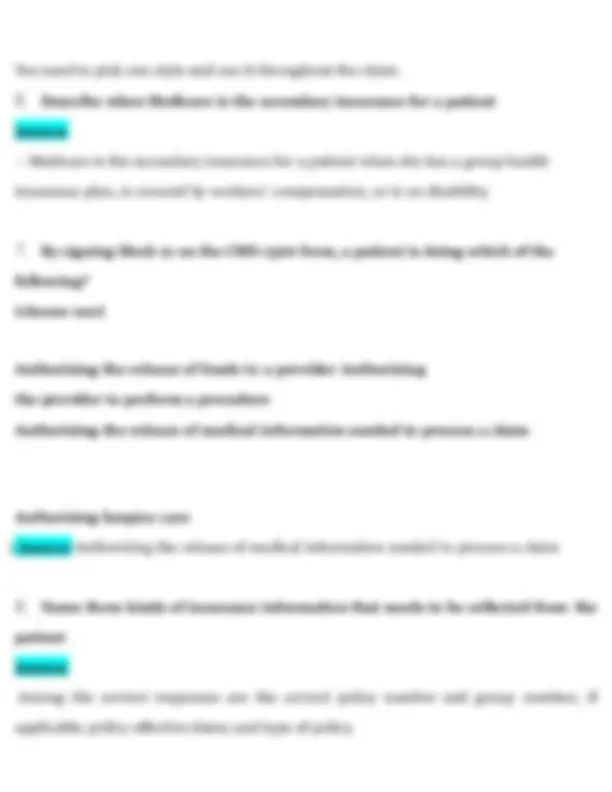
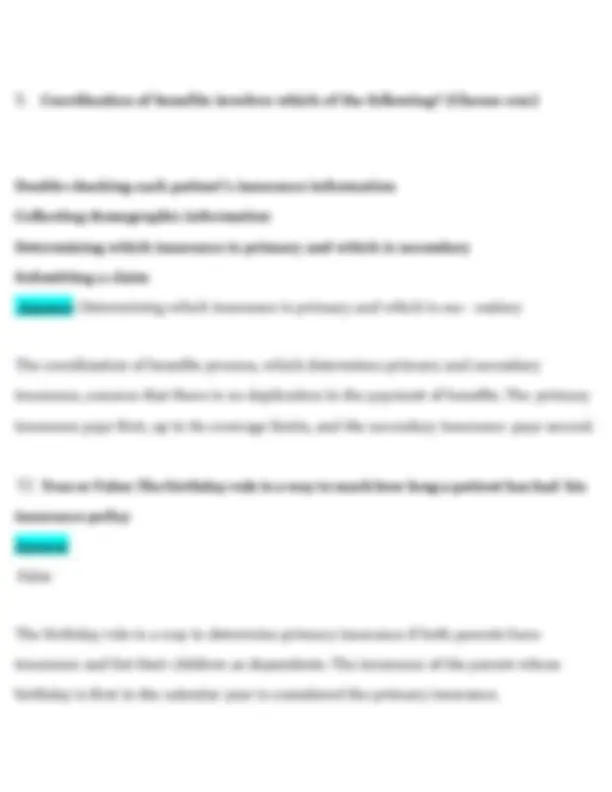

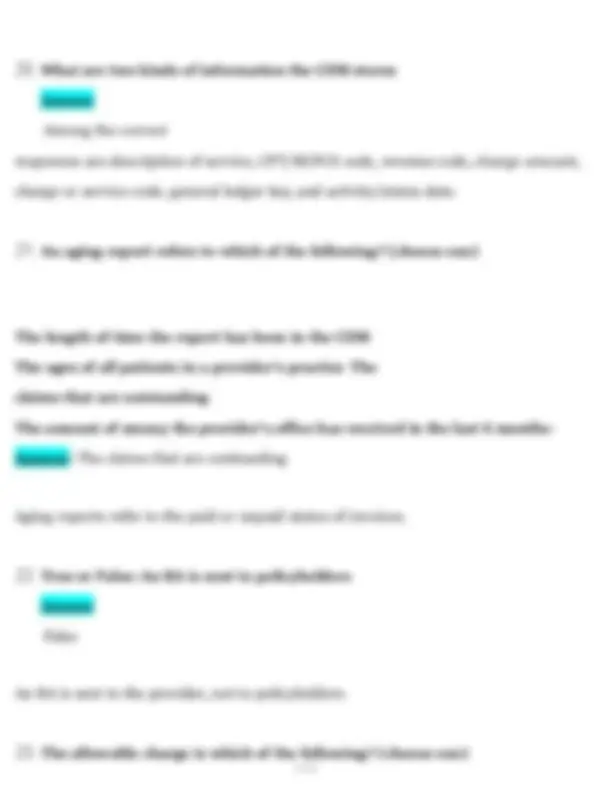
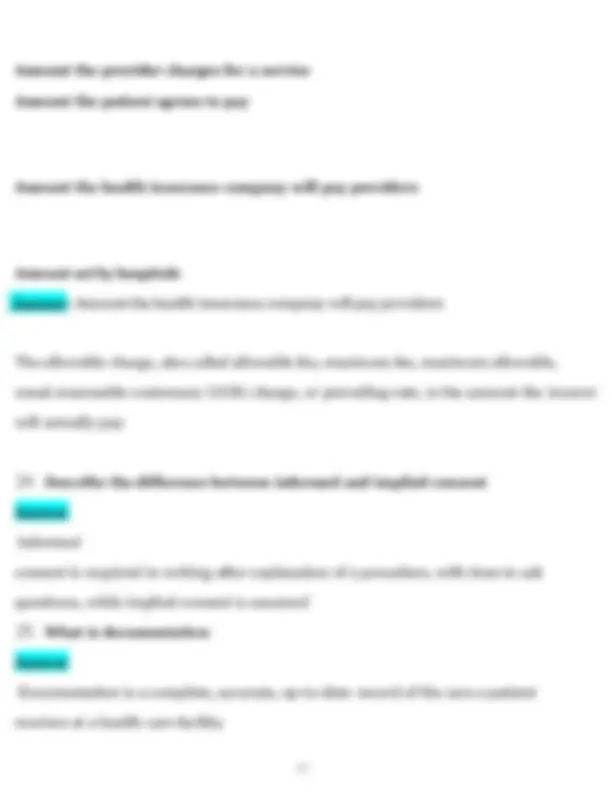

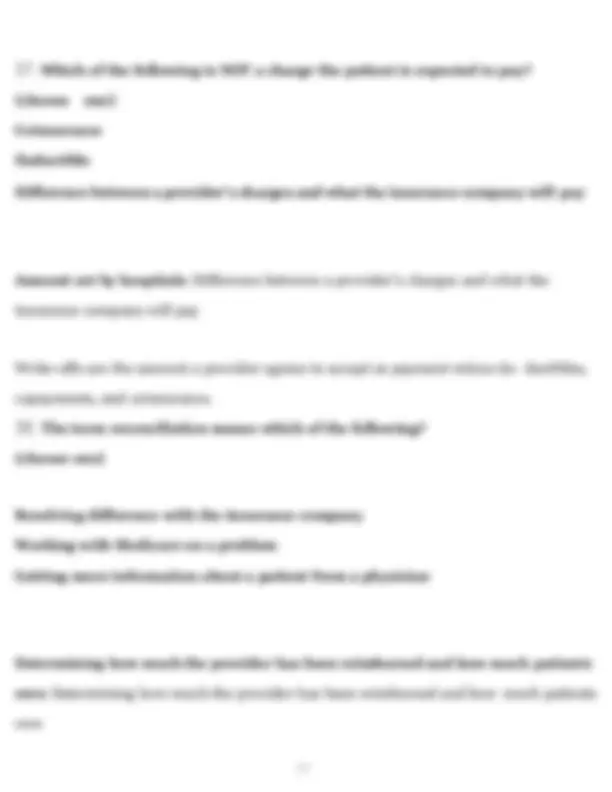


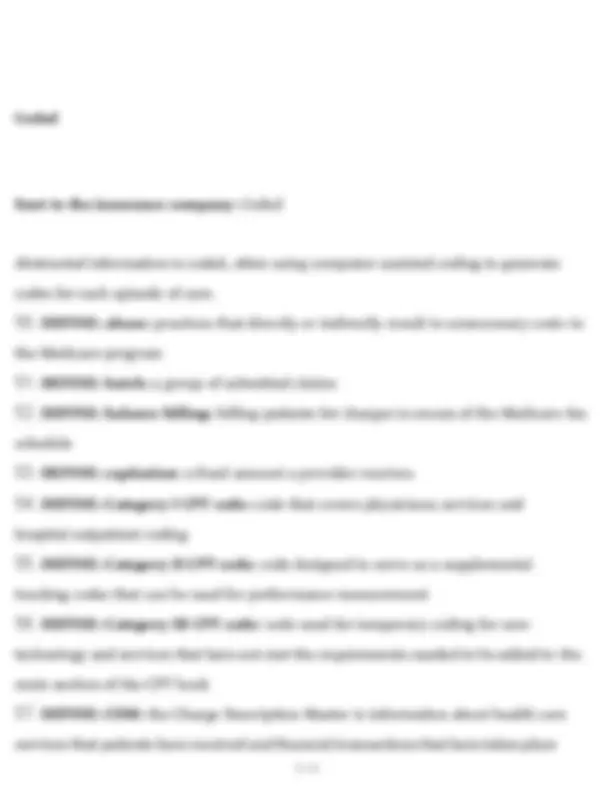
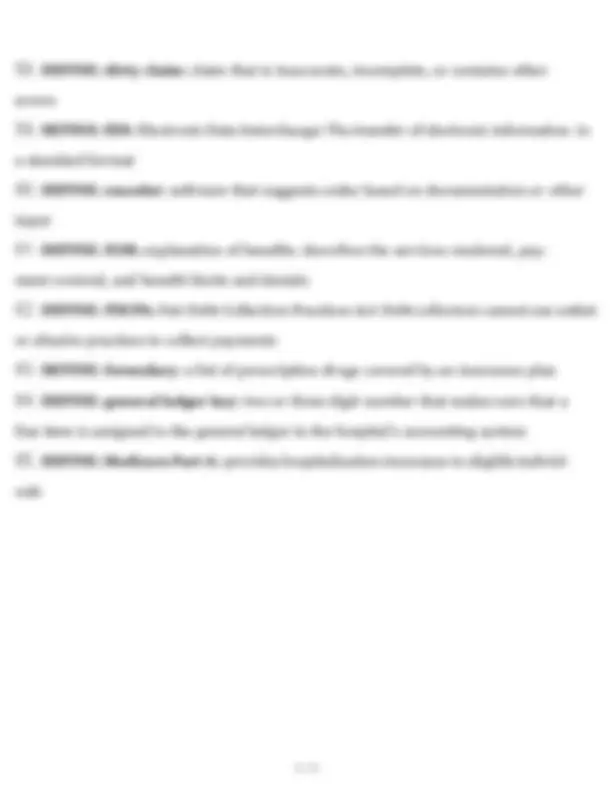
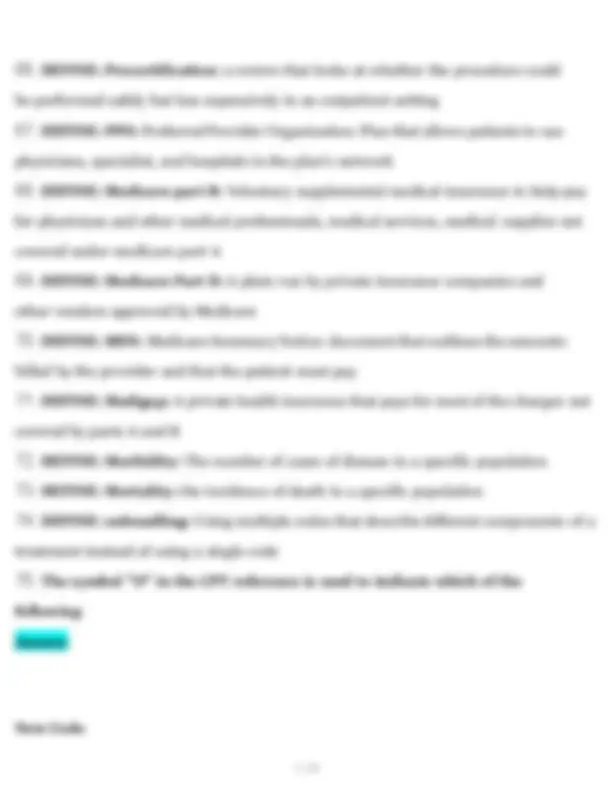

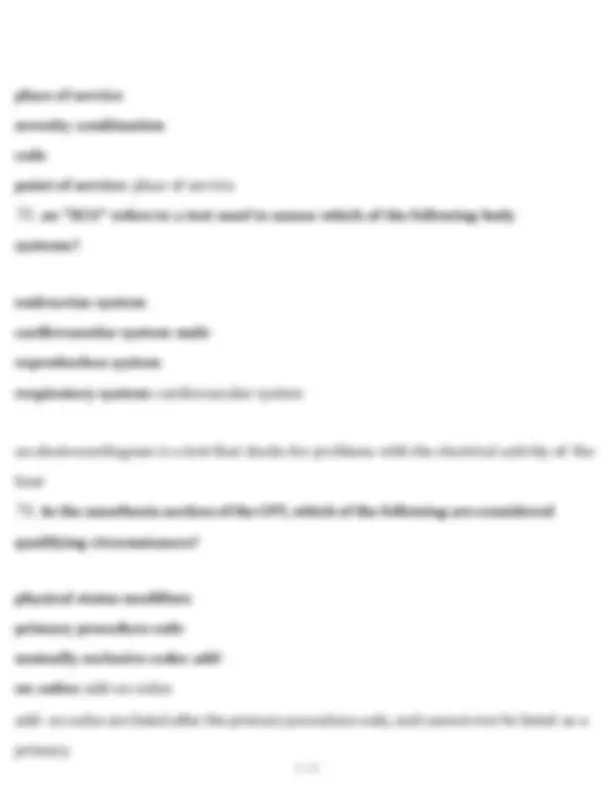

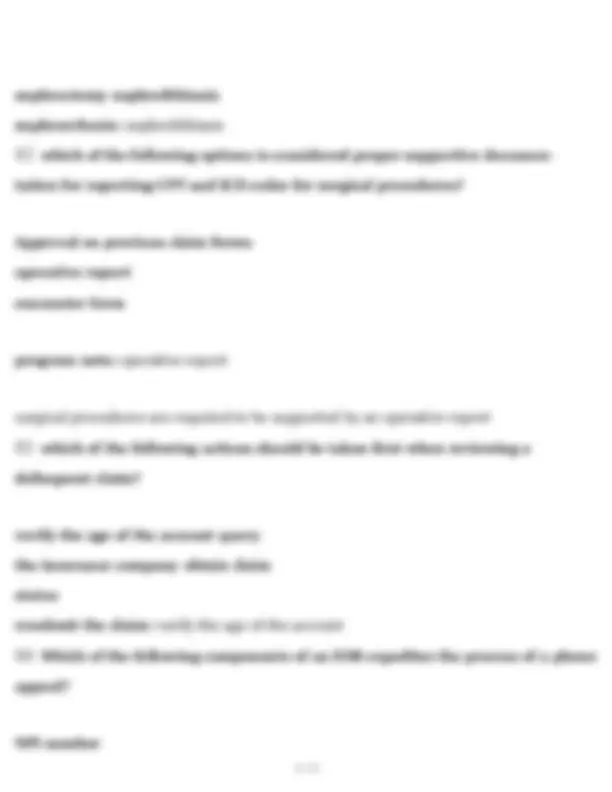
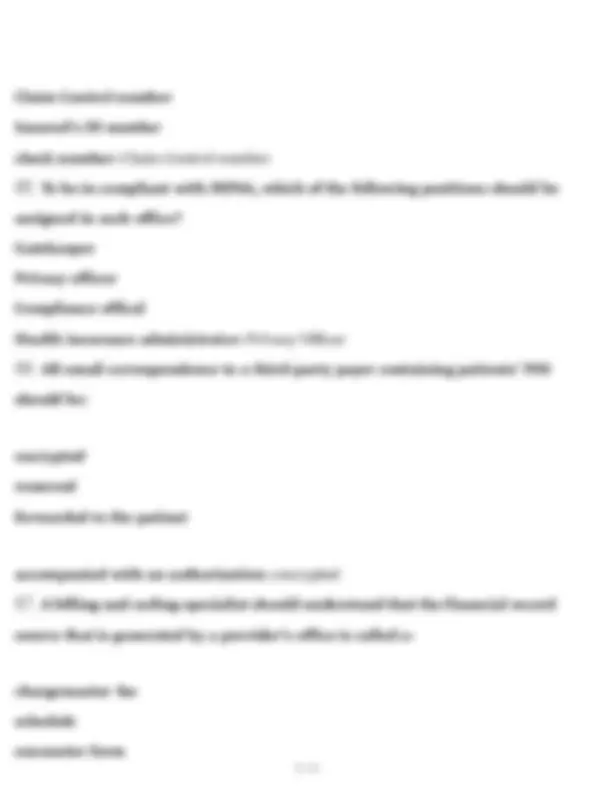

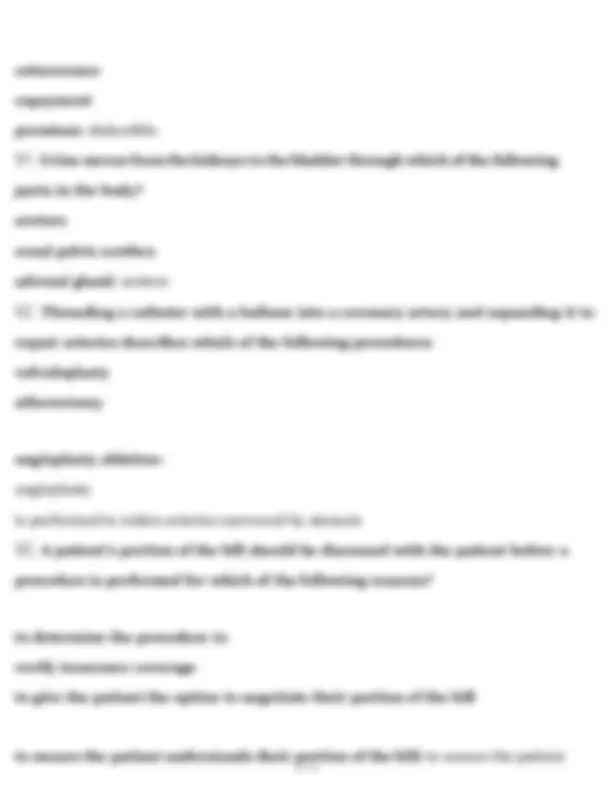


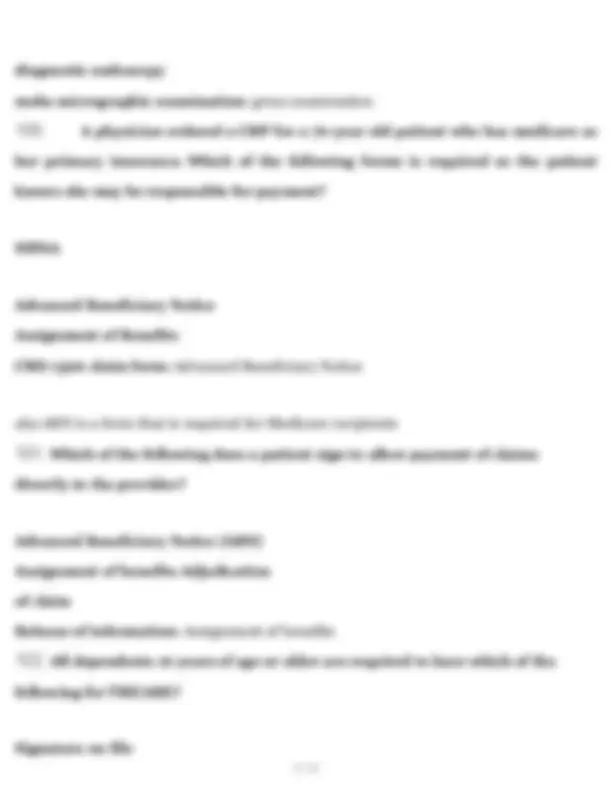





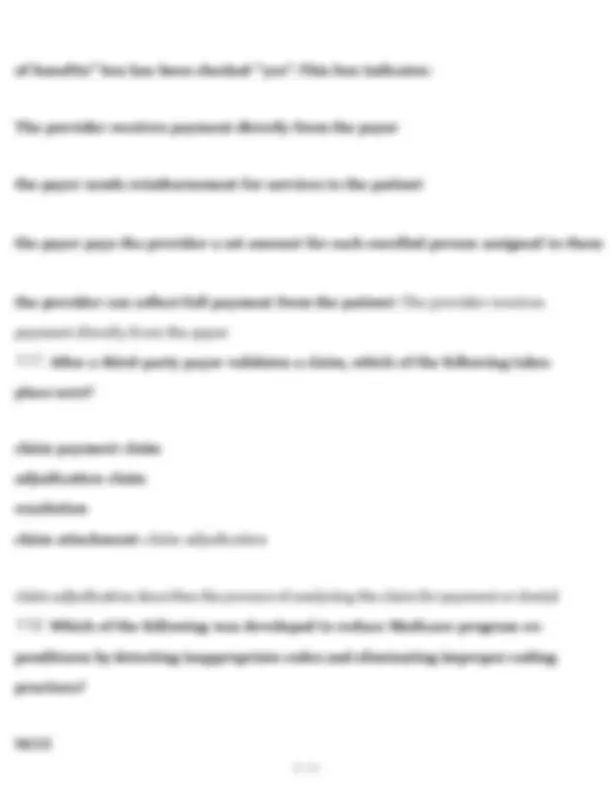




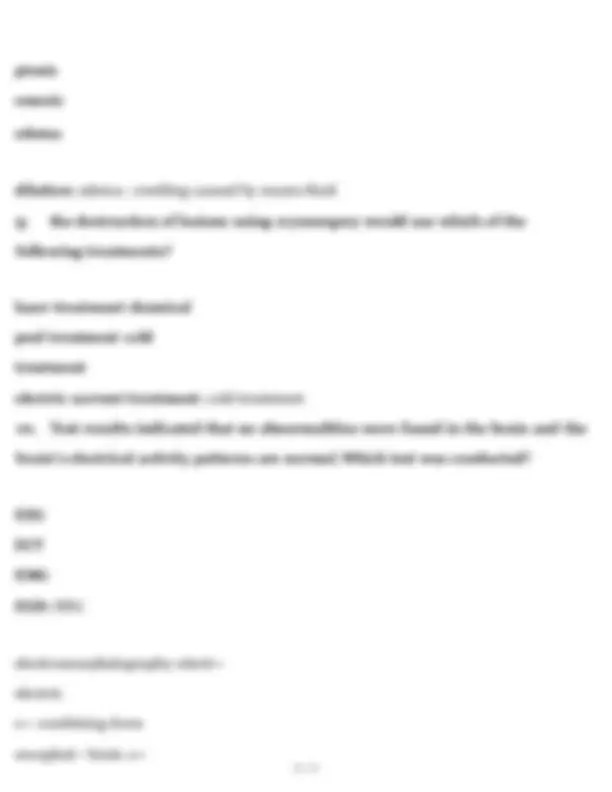
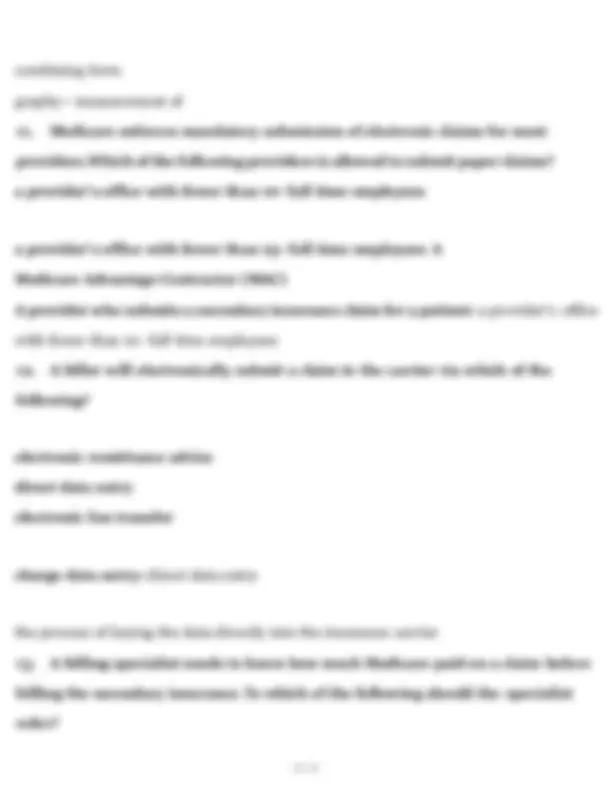


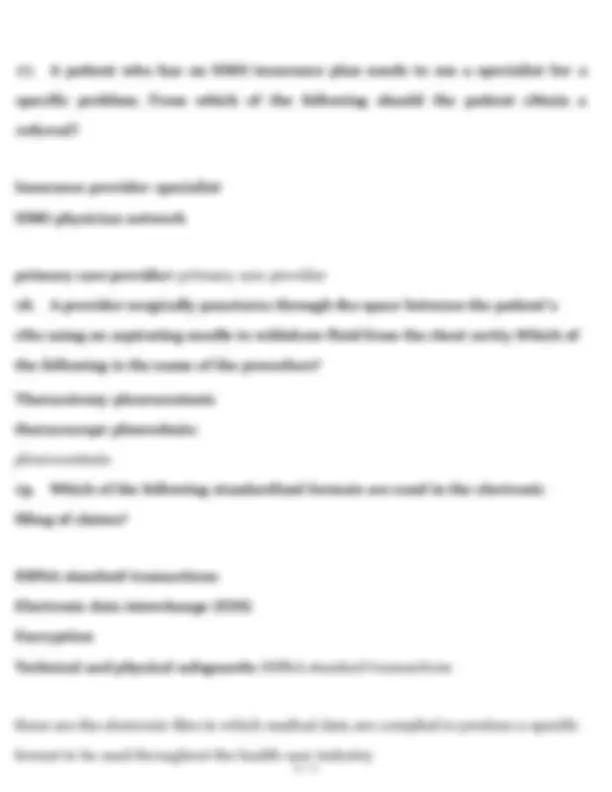










Study with the several resources on Docsity

Earn points by helping other students or get them with a premium plan


Prepare for your exams
Study with the several resources on Docsity

Earn points to download
Earn points by helping other students or get them with a premium plan
Community
Ask the community for help and clear up your study doubts
Discover the best universities in your country according to Docsity users
Free resources
Download our free guides on studying techniques, anxiety management strategies, and thesis advice from Docsity tutors
Comprehensive study guide for the NHA Certified Billing and Coding Specialist (CBCS) exam. Covers medical billing, coding systems (CPT, ICD-10, HCPCS), claims processing, HIPAA regulations, and insurance terminology. Ideal for students preparing for NHA certification. nhacbcs guide, medical billing exam, coding specialist study, cpt icd10 hcpcs, nha exam prep, billing coding certification, healthcare claims quiz, cbcs test questions, hipaa study guide, nha certification workbook
Typology: Exams
1 / 54

This page cannot be seen from the preview
Don't miss anything!















































NHA CBCS EXAM VERSION 1
All the data elements are completed.
All the data elements are written on a white piece of paper. Almost all the data elements are right. All the necessary data elements are completed Answer All the necessary data elements are completed.
Pays for everything Pays first Pays second
Has the option of paying first or second:
You need to pick one style and use it throughout the claim.
Authorizing the release of funds to a provider Authorizing the provider to perform a procedure Authorizing the release of medical information needed to process a claim
Authorizing hospice care : Answer Authorizing the release of medical information needed to process a claim
Double-checking each patient's insurance information Collecting demographic information Determining which insurance is primary and which is secondary Submitting a claim Answer: Determining which insurance is primary and which is sec- ondary
The coordination of benefits process, which determines primary and secondary insurance, ensures that there is no duplication in the payment of benefits. The primary insurance pays first, up to its coverage limits, and the secondary insurance pays second.
The birthday rule is a way to determine primary insurance if both parents have insurance and list their children as dependents. The insurance of the parent whose birthday is first in the calendar year is considered the primary insurance.
The cost of a health care premium A patient's share of the cost of health insurance The fee a patient pays for a doctor's visit The amount the patient must pay before the insurance company will start to provide benefits: Answer The amount the patient must pay before the insurance company will start to provide benefits
False
A disadvantage is that cost control measures, such as coinsurance and copayments, are usually in place.
The coinsurance percentage is the amount the provider is allowed for the service and the amount he was paid. The patient has coinsurance responsibility to what provider was allowed. A common percentage split is 80% for the insurance carrier and 20% for the patient.
What is the role of the accounts receivable department Answer The accounts receivable department manages follow-up to the billing process for a provider's office.
10 / 34
Amount the provider charges for a service Amount the patient agrees to pay
Amount the health insurance company will pay providers
Amount set by hospitals Answer: Amount the health insurance company will pay providers
The allowable charge, also called allowable fee, maximum fee, maximum allowable, usual-reasonable-customary (UCR) charge, or prevailing rate, is the amount the insurer will actually pay.
11 / 34
Consent is used only when the permission is for treatment, payment, or health care operations.
13 / 34
Answer physicians can't refer patients to practitioners with whom they have a financial relationship.
14 / 34
Difference between a provider's charges and what the insurance company will pay
Amount set by hospitals: Difference between a provider's charges and what the insurance company will pay
Write-offs are the amount a provider agrees to accept as payment minus de- ductibles, copayments, and coinsurance.
Resolving difference with the insurance company Working with Medicare on a problem Getting more information about a patient from a physician
Determining how much the provider has been reimbursed and how much patients owe: Determining how much the provider has been reimbursed and how much patients owe
16 / 34
comparison of mortality and morbidity.
Character 1
Character 2
Character 3
Character 4: Character 4
Supplies used during surgery
17 / 34
Type of insurance a patient has
Services rendered by the provider
Payments received from third-party payers: Services rendered by the provider
Physicians use CPT codes for hospital inpatient and outpatient services and for those performed in other facilities.
Writing notes about codes
10 / 34
Coded
Sent to the insurance company: Coded
Abstracted information is coded, often using computer-assisted coding to generate codes for each episode of care.
10 / 34